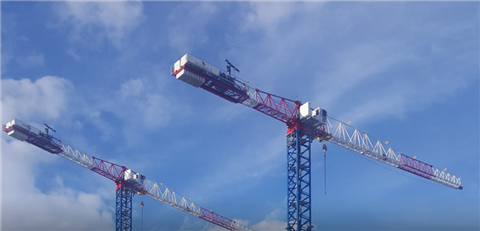Comansa cranes build bridge between islands
20 December 2021
Two Comansa 21LC660 flat top tower cranes are working on the construction of a cable-stayed bridge which will join two islands in the Philippines.
 Comansa's 21LC660 flat-top cranes
Comansa's 21LC660 flat-top cranes
The cranes are configured with an 80 metre boom.
The bridge, named the Cebu-Cordova Link Expressway, will join popular tourist destination Cebu City, the second largest city in the country, with Mactan Island, where the international airport is located.
The project aims to alleviate heavy traffic that currently travels through the two existing bridges between the islands.
The project was awarded by CCLEC (Cebu Cordova Link Expressway Corporation), a subsidiary of MPTC (Metro Pacific Tollways Corporation) to Cebu Link Joint Venture (CLJV), a joint venture between ACCIONA, First Balfour and DMCI.
Three stages
The project was divided into three sections: the Cordova viaduct and causeway, the cable-stayed bridge, and the access viaducts on Cebu City side.
The tower cranes are constructing the bride, which will span 650 metres and are supported by two 150 metre high towers.
The first tower is located a distance from the coast and is not accessible by land, so the tower crane had to be erected using a crawler crane mounted on a boat. The second tower, also far from the coast, has been placed on a temporary island/dock made using fill material and was erected using a crawler crane from this provisional island.
The tower cranes were also used to lift heavy equipment to the deck during the construction phase, which included mobile cranes, boom trucks and concrete pumps weighing up to 32 tonnes.
Given the bridge’s location in a country that is affected by typhoons during the rainy season, the tower cranes were designed to support winds of up to 250 kilometres per hour. In addition, due to their height and the proximity to Mactan-Cebu Airport, both the cranes and the booms were fitted with safety lights.
Dangerous conditions
Both tower cranes were struck by lightning during the construction work. However no operators were harmed and work continued following electrical checks.
The construction is scheduled to be completed at the first part of 2022.
STAY CONNECTED


Receive the information you need when you need it through our world-leading magazines, newsletters and daily briefings.




